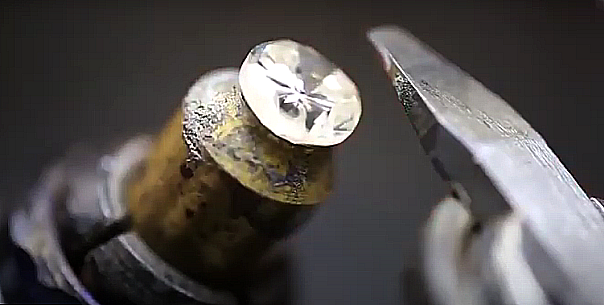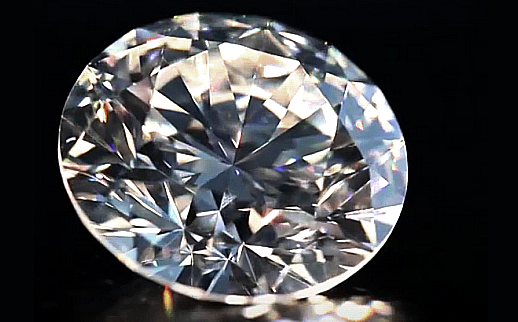3 Important Rules For Working With Crypto WalletsAbout Cryptounit ProgramAcademy of a Private InvestorAcademy of a Private Investor VideoAccredited InvestorsAltcoinAnatoli UnitskyAndrey KhovratovAnti-Money Laundering (AML) In CryptoAPIArbitrageArtCoin TokenArticle DirectoryASICAuction Terminology GlossaryBasics of Stock Market InvestingBear MarketBenefits of the Cryptounit Blockchain VideoBest Crypto Payment Provider In the WorldBitcoinBitcoin QuizBlockchainBlockchain ConfirmationBlockchain Consensus MechanismBlockchain ForkBlockchain GlossaryBlockchain QuizBored Ape Yacht ClubBuild a Business That OutperformsBull MarketBuying SkyWay SharesByzantine Fault Tolerance (BFT) ExplainedCasascius CoinCentral Bank Digital Currency (CBDC)Centralized Crypto ExchangeCoinCoinsetCold WalletCollateralCommodity Futures Trading Commission (CFTC)Cross-Chain TechnologyCRUCrypto ExchangeCrypto GlossaryCrypto JokesCrypto Literacy QuizCrypto QuizzesCrypto Scam QuizCrypto Terms to KnowCrypto TickerCryptocurrencyCryptographyCryptojackingCryptounit BlockchainCryptounit Blockchain VideoCryptounit GlossaryCryptounit Office Archive PageCryptounit ProgramdApp (Decentralized Application)Dead CoinDecentralized Exchange (DEX)Decentralized Finance (DeFi)Diamonds VAN DE K VideoDifference Between Bitcoin and EthereumDifferent Ways of Investing MoneyDigital CurrencyDigital Signature QuizDistributed LedgerDo Your Own Research (DYOR)Dollar Cost Averaging (DCA)Dow Jones Industrial Average (DJIA)Dragon Man Movie Official TrailerDragon Man Movie Project VideoEducational License for “API” Ltd.EncryptionERC-20ERC-721EthereumEvoScentEvoScent VideoFear Of Missing Out (FOMO)Fear, Uncertainty and Doubt (FUD)Fiat MoneyFNT Fintech CompanyGenesis BlockGenius of FinanceGlobal Unit PayGlobal Unit Pay Video PresentationGlossary of Banking TermsGlossary of Business TermsGlossary of Financial TermsHalvingHashing QuizHODLHot WalletHow Do I Start InvestingHow Rich is Satoshi Nakamoto?How to Benefit in Times of Inflation VideoHow to Create a BlockchainHow to Find Private InvestorsHow to Get Into FintechHow to Program Smart ContractsI Am Thrilled to Be a Part of This Global ProjectInitial Coin Offering (ICO)Initial Public Offering (IPO)Initial Token Offering (ITO)Innovation Basalt TechnologyInnovation Basalt Technology VideoInnovative Transportation TechnologiesInternational Bank Account Number (IBAN)Investing in Gold Mining StocksInvesting in Gold MiningInvestment Consultant Video CourseInvestment Portfolio CryptounitJagerJoy of Missing Out (JOMO)Know Your Customer (KYC)LedgerLiquidity in CryptocurrencyMaker and Taker Fees in Crypto TradingMarket Capitalization (Market Cap)Meme CoinMetal Credit CardMetaMaskMetaverse QuizMillenials Now Have Access to Generational WealthMy Best Investment EverNew Digital EvolutionNFT GlossaryNFT QuizOff-Chain TransactionsOn-Chain TransactionsOpen Edition NFTPeer-to-Peer (P2P)Personal Loan GlossaryProbably the Best STO on the MarketProjects of the Global Investment Portfolio VideoProof of Stake (PoS)Questions and AnswersRamon Bejar Creations Video PresentationReal Estate Glossary of TermsReal Estate Investing GlossaryRebase TokenSecurities and Exchange Commission (SEC)Security Token ExchangesSecurity Token Offering (STO)Soulbound Decentralized Identities for Security TokensSoulbound ID Launch by Stobox Proves a SuccessSoulbound TokensStoboxStock Market GlossarySynthetic Diamond ProductionTestimonialsTether Platform and Token (USDT)The Rediscovery of TrustuGainuGain Project Video PresentationUGPay Group AGUGPay Group - WCRU VideoUnitEx ExchangeUnitsky String TechnologiesUnitsky String Technologies VideoUNTBUSDUValidatorWe Started Investing When We Were 25What are Blue Chip NFT?What are Blue Chip Stocks?What are Crypto Assets?What are Crypto Smart Contracts?What are CryptoPunks NFT?What are Digital Assets?What are Digital Collectibles?What are Gas Fees?What are Gas Wars?What are Hashmasks?What are Non Fungible Tokens?What are Non-Sufficient Funds (NSF)?What are Soulbound Tokens (SBT)?What are Stablecoins in Crypto?What are Transactions Per Second (TPS)?What are Utility NFTs?What are Utility Tokens?What Does Burning Crypto Mean?What Does Diamond Hands Mean?What Does Paper Hands Mean?What Does To The Moon Mean?What Does WAGMI Mean?What Happened to Satoshi Nakamoto?What is a 51% Attack?What is a Baby Boomer?What is a Backlink?What is a Banner?What is a Barcode?What is a Bid-Ask Spread in Crypto?What is a Block in Blockchain?What is a Block Reward?What is a Blockchain Address?What is a Blockchain Node?What is a Blockchain Oracle?What is a Blog?What is a Bond?What is a Bot?What is a Broker?What is a Business Accelerator?What is a Cash Cow?What is a Commercial Bank?What is a Commodity?What is a Con?What is a Credit?What is a Credit Limit?What is a Credit Rating?What is a Crypto Airdrop?What is a Crypto Bridge?What is a Crypto Scam?What is a Crypto Token?What is a Crypto Wallet?What is a Crypto Whale?What is a Crypto Winter?What is a Cryptocurrency Public Ledger?What is a Cryptocurrency Roadmap?What is a DAO?What is a Dark Pool?What is a Day Trader?What is a Dead Cat Bounce?What is a Default?What is a Derivative?What is a Digital Credit Card?What is a Fiscal Quarter?What is a Fungible Token?What is a Governance Token?What is a Grace Period?What is a Hard Fork?What is a Hot Wallet?What is a Hybrid Blockchain?What is a Hybrid PoW/PoS?What is a Joint Account?What is a Market Cap?What is a Merkle Tree in Blockchain?What is a Mining Farm?What is a Nonce? What is a PFP NFT?What is a POS System?What is a Prepaid Card?What is a Private Blockchain?What is a Private Key?What is a Public Blockchain?What is a Public Key?What is a Reserve Currency?What is a Ring Signature?What is a Routing Number?What is a Rug Pull in Crypto?What is a Safe Deposit Box?What is a Satoshi?What is a Security Token?What is a Seed Phrase?What is a Shitcoin?What is a Sidechain?What is a Soft Fork?What is a Spot Market?What is a State Bank?What is a SWIFT Code?What is a Tax Identification Number (TIN)?What is a Time Deposit?What is a Transaction Account?What is a Variable Interest Rate?What is a Virtual Assistant (VA)?What is a Virtual Card?What is a Virtual Currency?What is a Visa Card?What is a Whitelist in Crypto?What is a Whitepaper?What is Accounts Payable (AP)?What is AMA in Crypto?What is Amortization?What is an Accrual?What is an ACH Transfer?What is an Actuary?What is an Addendum?What is an Algorithm?What is an Angel Investor?What is an Annuity?What is an Asset?What is an ATM?What is an Atomic Swap?What is an Audit?What is an Avatar?What is an EIN?What is an Embargo?What is an Entrepreneur?What is an IDO (Initial Dex Offering)?What is an Interest Rate?What is an Internet cookie?What is an Investment Bank?What is an NFT Drop?What is an NFT Floor Price?What is an Ommer Block?What is an Orphan Block?What is an Outstanding Check?What is an Overdraft?What is Artificial Intelligence (AI)?What is B2B (Business-to-Business)?What is B2G (Business-to-Government)?What is Bartering?What is Bitcoin Dominance?What is Bitcoin Pizza Day?What is Blockchain Immutability?What is Blockchain Used For?What is BRICS?What is Business-to-Consumer (B2C)?What is C2C (Customer to Customer)?What is Capitalism?What is Catfishing?What is CFD Trading?What is Check Kiting?What is Cloud Mining?What is Communism?What is Content Marketing?What is Decentralization in Blockchain?What is DeFi in Crypto?What is Delisting?What is Depreciation?What is Digital Marketing?What is Diversification?What is Double Spending?What is Dumb Money?What is Dumping?What is Earnings Per Share (EPS)?What is Economics?What is Email Marketing?What is Equity?What is Etherscan?What is Fintech?What is Foreign currency?What is Forex?What is Fundamental Analysis (FA)?What is GameFi?What is Generative Art NFT?What is Gwei?What is Hard Currency?What is Hash Rate?What is Hashing in Blockchain?What is Inflation?What is Initial Game Offering (IGO)?What is Interest?What is Interest Income?What is Mainnet?What is Mastercard?What is Metaverse in Crypto?What is Mining in Cryptocurrency?What is Minting NFT?What is Mobile Banking?What is Money Laundering?What is NFT Alpha?What is NFT Metadata?What is NFT Rarity?What is NGMI Meaning?What is Nominal Interest Rate?What is Online Banking?What is Open-End Credit?What is OpenSea NFT Marketplace?What is Personal Identification Number (PIN)?What is Play-to-Earn?What is Polygon?What is Proof of Authority (PoA)?What is Proof of Work (PoW)?What is Public Key Cryptography?What is Pump and Dump?What is Quantum Computing?What is Refinancing?What is Retail Banking?What is Ripple?What is Sharding?What is Slippage in Crypto?What is Smart Money?What is Solvency?What is Soulbound ID?What is SSL?What is Staking in Cryptocurrency?What is Technical Analysis (TA)?What is Testnet?What is the Ask Price?What is the Better Business Bureau (BBB)?What is the Bid Price?What is the Dark Web?What is the InterPlanetary File System (IPFS)?What is the Gold Standard?What is the Lightning Network?What is the Prime Rate?What is the Sandbox?What is the Secondary Market?What is the World Bank?What is Tier 1 Capital?What is Tokenomics?What is TRC-20?What is Universal Banking?What is Unspent Transaction Output (UTXO)?What is Usury?What is Volatility in Crypto?What is Wash Trading?What is Web3?What is Whisper?What is XRP?What is Zero-Knowledge Proof (ZKP)?Who is Beeple?Who is Satoshi Nakamoto?Who is Vitalik Buterin?Why Tokenization is a Safe HavenWhy You Should Try Your Hand at Trading
Synthetic Diamond Production
- Home
- Investment Portfolio Cryptounit
- Synthetic Diamond Production
Investments in Synthetic Diamond Production Diamond Van De K

Diamond Van De K is an innovative project aimed at creating its own synthetic diamond production.
The project is engaged in the development of innovations in the field of synthetic diamond cultivation on high-tech and unique equipment, using high quality carbon powder.
The investment is part of the Global Investment Portfolio Cryptounit.
At the moment, the diamond jewelry market is over-saturated, which leads to a demand for high-quality and large-sized products. This request can only be satisfied by a diamond made in the laboratory.
At the Van De K plant, the diamonds are produced in three days, while the competitors' work takes hundreds of hours.
The partnership with Diamond Van De K is extremely useful: the cost-effective project is in great demand in the most advanced and ambitious projects in the high-tech materials market, from medical production to oil production. It is also ecologically ethical: the refusal of "blood" diamonds and the extraction from the kimberlite tube will leave our descendants an uncontaminated legacy.
Similar factories, with full technical equipment and workload, receive an income of over $1,000,000 per month. High rate of return on equipment and investments, due to the high demand for manufactured products and weak competition on a global scale.
Beginnings of the Synthetic Diamond Production
The first synthetic diamonds were produced in the early 1950s by researchers at the Allmanna Svenska Elektriska Aktiebolaget laboratory in Stockholm, Sweden but they didn't immediately publish their work. Soon after, in 1954, General Electric’s researchers reported their successful diamond synthesis.
What are the main Synthetic Diamond Production methods?

There are two main methods of producing laboratory-grown diamonds:
- HPHT - high pressure / high temperature process
- CVD - chemical vapor deposition
Both methods are commonly used, but CVD is becoming increasingly popular for the production of gem quality synthetic diamonds for jewelry, while HPHT, and this is the case of Van De K, is most often used in synthetic diamond production for industrial use.
Can You Distinguish a Natural Diamond from a Synthetic one?

Both HPHT and CVD methods produce diamonds with the same optical, physical and chemical properties as natural diamonds. However, these laboratory processes leave some telltale marks that experts can identify, but only on a very close inspection.
It is interesting though that the synthetic diamond production manufactures diamonds that are ten times more durable respect to natural ones what is a great plus for the industry usage.
The investment of the UGPay Group in the synthetic diamond production is also part of the Global Investment Portfolio Cryptounit.
Global Investment Portfolio Cryptounit
Global Unit Pay, UnitEx exchange, Cryptounit blockchain, Academy of a Private Investor and New Digital Evolution are among the operating businesses that are part of the Global Investment Portfolio CryptoUnit.
Holders of the security token WCRU are co-owners of this portfolio, which currently comprises more than 60 financial instruments from various segments of the investment market and has a valuation of over $11.6 billion, according to the independent evaluation of Crowe Global.